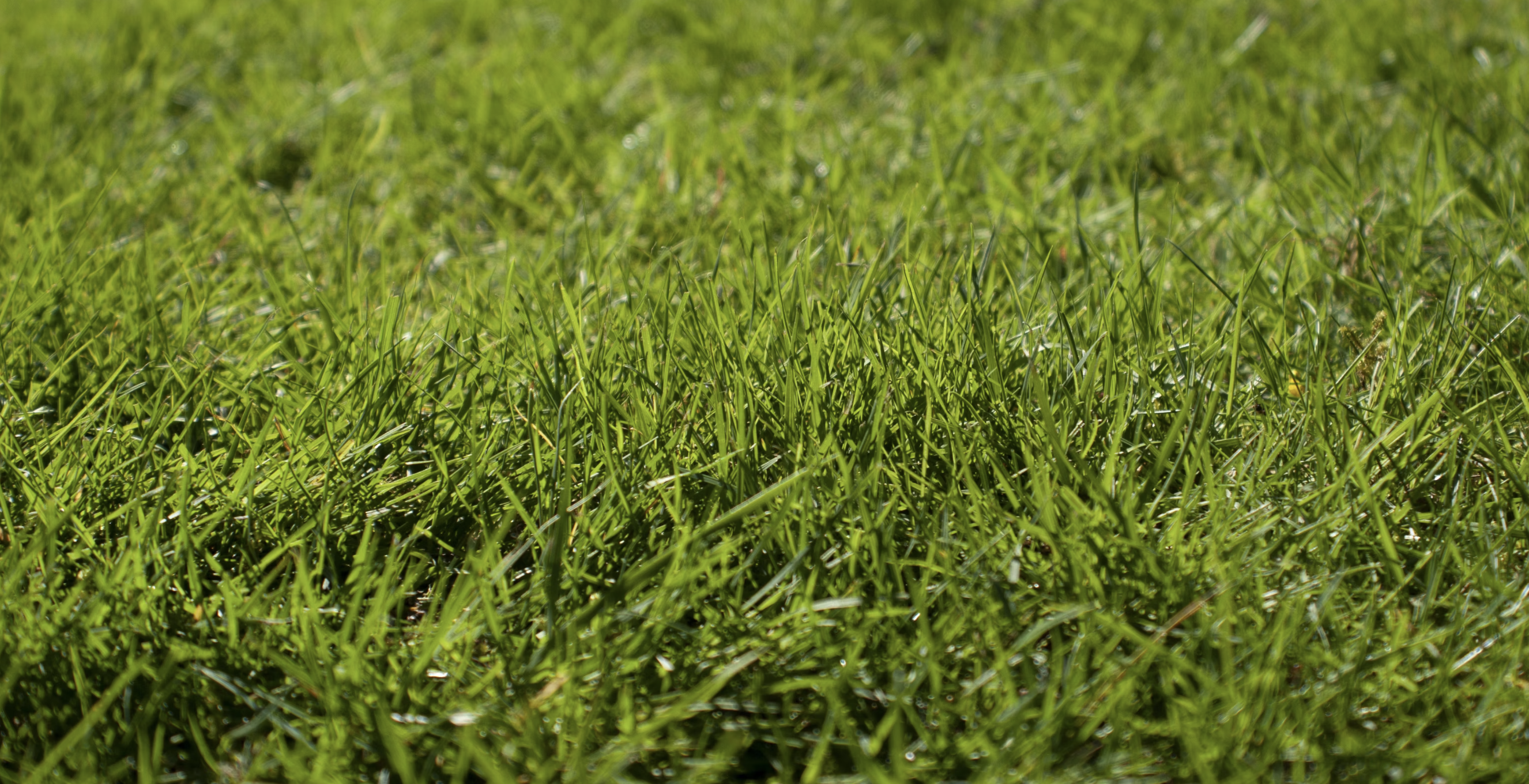
Are you dreaming of a lush green lawn that will be the envy of your neighborhood? Look no further! In this comprehensive guide, we will reveal the secrets to choosing the perfect lawn fertilizer that will transform your yard into a verdant oasis.
With so many options available on the market, selecting the right fertilizer can be overwhelming. But fear not! We will break down the essential factors you need to consider, such as nutrient ratios, soil type, and grass species. Whether you have a cool-season or warm-season grass, we have got you covered.
Our expert tips and insights will help you navigate the world of lawn fertilizers with confidence. We'll explain the importance of nitrogen, phosphorus, and potassium, and how to decipher the numbers on the fertilizer package. Plus, we'll share the dos and don'ts of application to ensure optimum results.
No matter your level of gardening expertise, this guide will empower you to make informed decisions and achieve the stunning lawn you've always wanted. So get ready to unlock the secrets of a lush green lawn and become the talk of the town!
Importance of lawn fertilization
Having a lush green lawn is a dream for many homeowners. It not only enhances the beauty of your property but also creates a welcoming space for outdoor activities. Fertilizing your lawn is a crucial step in achieving that vibrant green look. But why is lawn fertilization so important?
Lawn fertilizers provide essential nutrients that grass needs to grow healthy and strong. These nutrients include nitrogen (N), phosphorus (P), and potassium (K), also known as NPK. Each nutrient plays a specific role in promoting plant growth and resilience.
Nitrogen is responsible for promoting leaf and stem growth, giving your lawn that vibrant green color. Phosphorus aids in root development, while potassium helps with overall plant health, including resistance to disease and stress.
Without proper fertilization, your grass may not have access to adequate nutrients, leading to weak growth, pale color, and increased susceptibility to pests and diseases. Regular fertilization ensures that your lawn gets the nutrients it needs to thrive and withstand the challenges of everyday wear and tear.
Understanding the different types of lawn fertilizers
When it comes to lawn fertilizers, there are various types available on the market. Understanding the differences between them is crucial in selecting the right one for your lawn.
1. Quick-release fertilizers: These fertilizers provide an instant nutrient boost to your lawn. They release nutrients rapidly, but their effects are short-lived. Quick-release fertilizers are ideal for giving your lawn a quick green-up before an event or if you need to address nutrient deficiencies promptly.
2. Slow-release fertilizers: These fertilizers release nutrients gradually over an extended period. They provide a steady supply of nutrients to your lawn, resulting in longer-lasting effects. Slow-release fertilizers are beneficial for promoting sustained growth and reducing the risk of nutrient leaching.
3. Liquid fertilizers: Liquid fertilizers come in a liquid form and are usually applied using a sprayer. They are quickly absorbed by the grass, making them an efficient option for quick results. Liquid fertilizers are popular for their ease of application and ability to provide targeted nutrition to specific areas of your lawn.
4. Granular fertilizers: Granular fertilizers are solid particles that are spread across your lawn. They come in various sizes and formulations. Granular fertilizers are easy to apply, and their slow-release variants ensure a steady supply of nutrients to your grass over time.
By understanding the different types of lawn fertilizers, you can choose the one that best suits your lawn's needs and your preferred method of application.
Factors to consider when choosing a lawn fertilizer
Selecting the right lawn fertilizer involves considering several factors to ensure optimal results. Here are the key factors to keep in mind:
1. Nutrient ratios: Different grass species have varying nutrient requirements. Understanding the nutrient needs of your grass will help you select a fertilizer with an appropriate nutrient ratio. For example, cool-season grasses generally benefit from a higher nitrogen content, while warm-season grasses may require a balanced NPK ratio.
2. Soil type: The composition of your soil plays a crucial role in determining the effectiveness of fertilizers. Conducting a soil test can provide valuable insights into your soil's pH levels and nutrient deficiencies. Adjusting the pH and addressing any nutrient imbalances will ensure that your lawn can efficiently absorb the fertilizer's nutrients.
3. Grass species: Different grass species have specific fertilization requirements. Cool-season grasses, such as Kentucky bluegrass and fescue, thrive in cooler climates and require regular fertilization during their active growth periods. Warm-season grasses, such as Bermuda grass and Zoysia grass, have different growth patterns and may require fertilization at different times of the year.
Considering these factors will help you choose a fertilizer that meets the unique needs of your lawn, promoting healthy growth and vibrant green color.
The best time to fertilize your lawn
Timing is crucial when it comes to fertilizing your lawn. Applying fertilizer at the right time ensures that your grass receives the maximum benefit from the nutrients. Here are some guidelines for timing your lawn fertilization:
1. Spring: Early spring is an ideal time to fertilize your lawn, especially for cool-season grasses. As the temperatures rise, the grass starts actively growing, requiring a nutrient boost. Applying a slow-release fertilizer during this time provides the grass with the necessary nutrients for healthy growth.
2. Summer: Fertilizing during the summer months can help your lawn withstand the stress of heat and drought. However, it's essential to choose a fertilizer with a lower nitrogen content to avoid excessive growth, which can make your lawn more susceptible to disease and pests.
3. Fall: Fall is another critical time to fertilize your lawn, particularly for cool-season grasses. Applying a slow-release fertilizer in late summer or early fall promotes root growth and helps your grass recover from the summer heat. This fertilization also prepares the grass for winter dormancy, ensuring a quick green-up in the spring.
By timing your lawn fertilization correctly, you can provide your grass with the nutrients it needs during its active growth periods, resulting in a healthier and more resilient lawn.
How to properly apply lawn fertilizer
Applying lawn fertilizer involves more than just spreading it across your lawn. Proper application techniques ensure even coverage and prevent potential damage to your grass. Here's a step-by-step guide to help you apply lawn fertilizer correctly:
1. Measure your lawn: Determine the square footage of your lawn to calculate the amount of fertilizer needed. This can be done by measuring the length and width of your lawn and multiplying the two values.
2. Choose the right spreader: Select the appropriate spreader for the type of fertilizer you're using. Drop spreaders provide precise control for small areas, while broadcast spreaders cover larger areas more quickly.
3. Calibrate your spreader: Before applying the fertilizer, calibrate your spreader to ensure accurate application rates. Follow the manufacturer's instructions for calibration, as different spreaders may have specific settings.
4. Apply in a pattern: Start by fertilizing the perimeter of your lawn and then move back and forth in a pattern to cover the entire area. Overlap the application slightly to ensure even distribution.
5. Water after application: Water your lawn immediately after fertilizing to help the granules dissolve and release the nutrients into the soil. This also prevents the fertilizer from sitting on the grass blades, potentially causing burn spots.
6. Clean your spreader: After use, clean your spreader thoroughly to prevent any leftover fertilizer from corroding the equipment.
Proper application techniques ensure that your lawn receives an even distribution of nutrients, leading to uniform growth and a healthier overall appearance.
Common mistakes to avoid when fertilizing your lawn
While fertilizing your lawn may seem straightforward, there are common mistakes that homeowners often make. Avoiding these mistakes can help you achieve the best results from your fertilization efforts. Here are some common pitfalls to watch out for:
1. Over-fertilization: Applying too much fertilizer can harm your grass and lead to nutrient runoff, polluting nearby water bodies. Always follow the recommended application rates and avoid the temptation to over-fertilize.
2. Under-fertilization: On the other hand, under-fertilizing your lawn may not provide the necessary nutrients for healthy growth. Be sure to apply the appropriate amount of fertilizer based on your lawn's needs and the specific product instructions.
3. Uneven application: Inconsistent application can result in noticeable variations in grass color and growth. Take care to apply the fertilizer evenly across your lawn, following a pattern and overlapping slightly for uniform coverage.
4. Fertilizing dormant grass: Fertilizing dormant grass, especially during the winter months, is not recommended. The grass is not actively growing and will not be able to absorb and utilize the nutrients effectively.
By avoiding these common mistakes, you can ensure that your lawn receives the right amount of nutrients for optimal growth and health.
Organic vs. synthetic fertilizers: Which is right for your lawn?
When choosing a lawn fertilizer, you may come across both organic and synthetic options. Understanding the differences between these two types will help you decide which is the best fit for your lawn.
1. Organic fertilizers: Organic fertilizers are derived from natural sources, such as compost, manure, and bone meal. They provide slow-release nutrients and improve soil health over time. Organic fertilizers are environmentally friendly and promote long-term sustainability. However, they may require larger quantities to achieve the same nutrient levels as synthetic fertilizers.
2. Synthetic fertilizers: Synthetic or chemical fertilizers are manufactured using synthetic ingredients. They provide quick-release nutrients and are often formulated with precise NPK ratios. Synthetic fertilizers are readily available, easy to apply, and offer immediate results. However, they may have a higher risk of nutrient leaching and can be harmful to the environment if not used correctly.
Choosing between organic and synthetic fertilizers depends on your personal preferences, sustainability goals, and the specific needs of your lawn. Both options can be effective when used appropriately.
Lawn fertilizer schedules for different regions
The timing and frequency of lawn fertilization can vary depending on your geographic region. Different climates and grass species have specific requirements. Here's a general guide to lawn fertilizer schedules for different regions:
1. Northern regions: In colder northern regions with cool-season grasses, fertilization is typically done in early spring and late fall. These fertilizations help prepare the grass for the harsh winter and promote healthy growth in the spring.
2. Southern regions: In warmer southern regions with warm-season grasses, fertilization is often done in late spring and early summer. This timing coincides with the grass's active growth period, ensuring it receives the necessary nutrients for optimal development.
3. Transition zones: Transition zones, where both cool-season and warm-season grasses are grown, require a combination of both schedules. Fertilization in early spring and early fall caters to the needs of both grass types.
Consulting with local lawn care experts or conducting research specific to your region will provide the most accurate guidance for your lawn fertilizer schedule.
Troubleshooting common lawn fertilizer issues
Even with proper fertilization practices, issues may arise that require troubleshooting. Here are some common lawn fertilizer issues and how to address them:
1. Burn spots: Burn spots occur when fertilizer is applied too heavily or unevenly. To address burn spots, water the affected areas thoroughly to dilute the fertilizer and prevent further damage. Avoid applying fertilizer too close to sensitive areas, such as sidewalks and driveways.
2. Weed growth: Fertilizing your lawn may inadvertently promote weed growth. To combat weeds, consider using a fertilizer with a pre-emergent herbicide or apply weed control products separately. Regular mowing and proper lawn maintenance practices also help prevent weed invasion.
3. Nutrient deficiencies: If your lawn shows signs of nutrient deficiencies, such as yellowing or stunted growth, consider a soil test to identify the specific nutrient lacking. Adjusting your fertilizer application or using targeted nutrient supplements can help address these deficiencies.
4. Excessive growth: If your lawn is growing too quickly, resulting in frequent mowing and increased maintenance, consider switching to a fertilizer with a lower nitrogen content. This will help moderate growth while still providing essential nutrients.
By troubleshooting common lawn fertilizer issues promptly, you can ensure that your lawn remains healthy and vibrant throughout the year.
Conclusion: Achieving a lush green lawn with the right fertilizer
Choosing the perfect lawn fertilizer is the key to unlocking the secrets of a lush green lawn. By understanding the importance of fertilization, the different types of fertilizers, and the factors to consider when selecting one, you can make informed decisions for your lawn's specific needs.
Timing your fertilization correctly, applying the fertilizer properly, and avoiding common mistakes will maximize the benefits and prevent potential damage. Whether you prefer organic or synthetic fertilizers, both options can provide excellent results when used appropriately.
Remember to adjust your lawn fertilizer schedule based on your region and grass type, ensuring that your lawn receives the nutrients it needs during its active growth periods.
By following these guidelines and troubleshooting common issues, you'll be well on your way to achieving a lush green lawn that will be the envy of your neighborhood. So, start exploring the world of lawn fertilizers, unlock the secrets, and watch your lawn transform into a verdant oasis!















